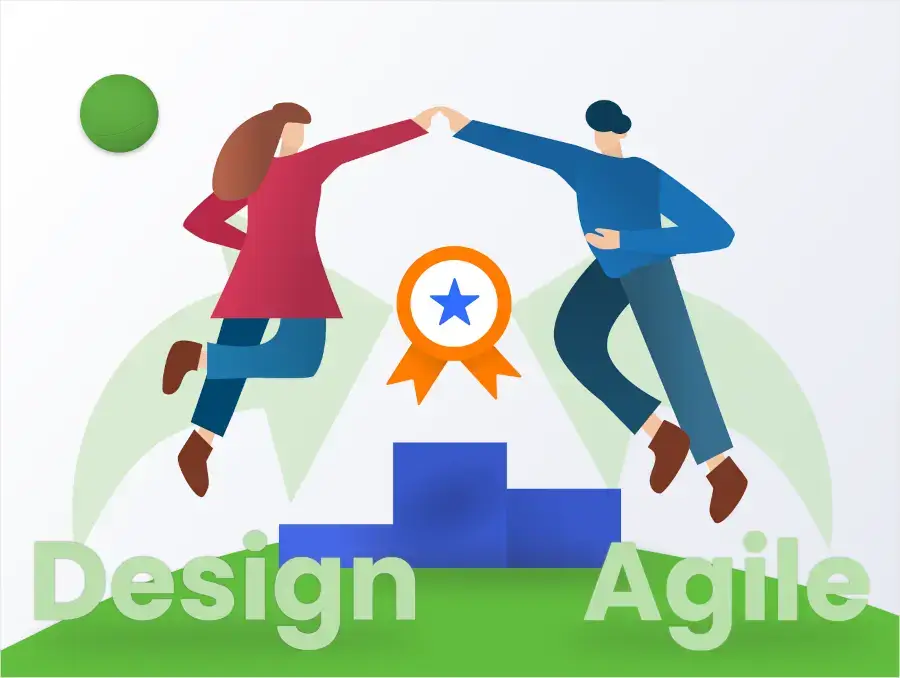Agile Style - An Overview to Reliable and Versatile Product Developmen…
페이지 정보
작성자 Concetta 댓글 0건 조회 81회 작성일 24-11-13 02:51본문
Introduction
Agile Layout provides a versatile, efficient approach to item growth, incorporating dexterous concepts with layout reasoning. This strategy utilizes short, iterative cycles and fast individual comments to produce solutions that meet users' advancing needs. Agile Style is especially effective in a globe where market requires modification quickly and products should be straightforward.
Defining Agile Style
Agile Design combines design principles with active workflows, causing products that are receptive, top quality, and user-centered. By accepting an iterative method, Agile Style enables groups to examine and enhance their job, making sure a close positioning with customer needs.
 Core Concepts of Agile Design
Core Concepts of Agile Design
User-Centered Reasoning: Agile Layout ensures customer responses goes to the center of each iteration. This ongoing comments process aids lead the growth of an item that aligns with individual expectations.
Fast Prototyping: Agile Style includes creating prototypes that can be checked and refined swiftly, stopping pricey layout changes at later phases.
Cross-Disciplinary Partnership: Partnership in between different groups, such as developers, developers, and stakeholders, is vital to Agile Design's success.
Responsive to Modification: Agile Design encourages flexibility, adjusting as market requires or individual assumptions advance.
Why Agile Design Issues
The Agile Style process causes products that better fit customers' needs, creating an one-upmanship. By reacting to real-time responses, Agile Style decreases development costs and develops products that adjust to transforming requirements.
How to Apply Agile Design
Break down the task right into style sprints, which permits quicker modifications based upon feedback. Constant testing with genuine individuals ensures the final product is pertinent and user-focused.
Agile Design supplies a flexible, effective approach to product development, integrating nimble principles with layout thinking. This method makes use of short, repetitive cycles and fast individual feedback to create solutions that meet customers' developing needs. Agile Style is especially efficient in a world where market demands change promptly and items should be straightforward.
Agile Layout provides a versatile, efficient approach to item growth, incorporating dexterous concepts with layout reasoning. This strategy utilizes short, iterative cycles and fast individual comments to produce solutions that meet users' advancing needs. Agile Style is especially effective in a globe where market requires modification quickly and products should be straightforward.
Defining Agile Style
Agile Design combines design principles with active workflows, causing products that are receptive, top quality, and user-centered. By accepting an iterative method, Agile Style enables groups to examine and enhance their job, making sure a close positioning with customer needs.
 Core Concepts of Agile Design
Core Concepts of Agile DesignUser-Centered Reasoning: Agile Layout ensures customer responses goes to the center of each iteration. This ongoing comments process aids lead the growth of an item that aligns with individual expectations.
Fast Prototyping: Agile Style includes creating prototypes that can be checked and refined swiftly, stopping pricey layout changes at later phases.
Cross-Disciplinary Partnership: Partnership in between different groups, such as developers, developers, and stakeholders, is vital to Agile Design's success.
Responsive to Modification: Agile Design encourages flexibility, adjusting as market requires or individual assumptions advance.
Why Agile Design Issues
The Agile Style process causes products that better fit customers' needs, creating an one-upmanship. By reacting to real-time responses, Agile Style decreases development costs and develops products that adjust to transforming requirements.
How to Apply Agile Design
Break down the task right into style sprints, which permits quicker modifications based upon feedback. Constant testing with genuine individuals ensures the final product is pertinent and user-focused.
Agile Design supplies a flexible, effective approach to product development, integrating nimble principles with layout thinking. This method makes use of short, repetitive cycles and fast individual feedback to create solutions that meet customers' developing needs. Agile Style is especially efficient in a world where market demands change promptly and items should be straightforward.
댓글목록
등록된 댓글이 없습니다.